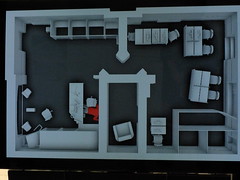How Fashion Houses And Designers Can Use Websites

Get More Information Here:
By Madison Lockwood
A quick search online will reveal that many of the major fashion houses not only have websites, but use them in creative ways. Fashion is an industry built on fantasy, to a great degree. Those fantasies are constructed in glossy magazines oriented to professionals in general (Vanity Fair) and to women who follow the trends (Elle). The online experience is a multidimensional tool to expand on designer fashions and the yearly line of products.
Gucci has a website that rivals some of the major car makers for quality, use of multimedia and focus. You can choose from sites oriented to several different continents. One of the intriguing features of the Gucci site is its frame-by-frame layout of their current ad campaign. The value of the advertising in keeping Gucci “current” is made evident by its prominence as a website feature.
Some fashion websites that you wouldn’t expect to see doing it are retailing to the public directly from their websites. There’s a corporate area for promotional materials and haute couture, and a retail section for deals on the latest products. Companies that engage in online retail include Dior, Ralph Lauren and Calvin Klein – not a great surprise – along with Versace; Armani; Giancarlo Ferre and Prada, companies that you wouldn’t expect to see retailing on the web.
A well developed website can take the designs showcased in model photography and on the runways and present them in a manner that makes them much more accessible to women other than twenty-something anorexics. Visual tools can be used to rotate a dress, suit, jacket or pair of pants 360 degrees. Short video pieces can show a garment and provide voice-over describing its practicality, range of use, glamour or whatever factor the company wants to highlight.
Web searches on fashion turn up a large selection of generic fashion sites that gain their revenue from advertising. One of their principal content highlights is always a list of designer web sites. In one case, apparelsearch.com, the site lists fashion designers and design houses in three categories: website for corporate information, for retail opportunity, and for wholesale connections. That is valuable, down-to-the-rack-sale advertising for even the most well established houses. And it’s free.
Fashion designers that cater to men, women and children can lay out their product lines for “the entire family” in one location – something that is difficult if not impossible using the magazine format. At best, the marketer would be buying ads in three different print genres. The web also allows fashion houses to segment in other ways. Click on Donna Karen and you’ll find a web site that offers her accessory line up. Try DKNY and you’ll find clothing.
Designers use the web in many functional mixtures. Fendi has an area for media inquiries that includes press releases and photos. It has an e-shopping area (U.S. only) for accessories. For the rest, there is a list of their boutiques in the United States. And there is an absolutely incomprehensible video with a maddening electronica overdub that will not stop repeating itself and drive you crazy, just like alongside the runway. Armani has a full-blown merchandising area, along with a list of its retail site in the country. You can order the items you don’t need to try on, and find out where to try on the items that require a fitting check.
About the Author: Madison Lockwood is a customer relations associate, specializing in small business development, for Apollo Hosting. Apollo Hosting provides website hosting, ecommerce hosting, vps hosting, and web design services to a wide range of customers.
Source: isnare.com
Permanent Link: isnare.com/?aid=140862&ca=Internet


